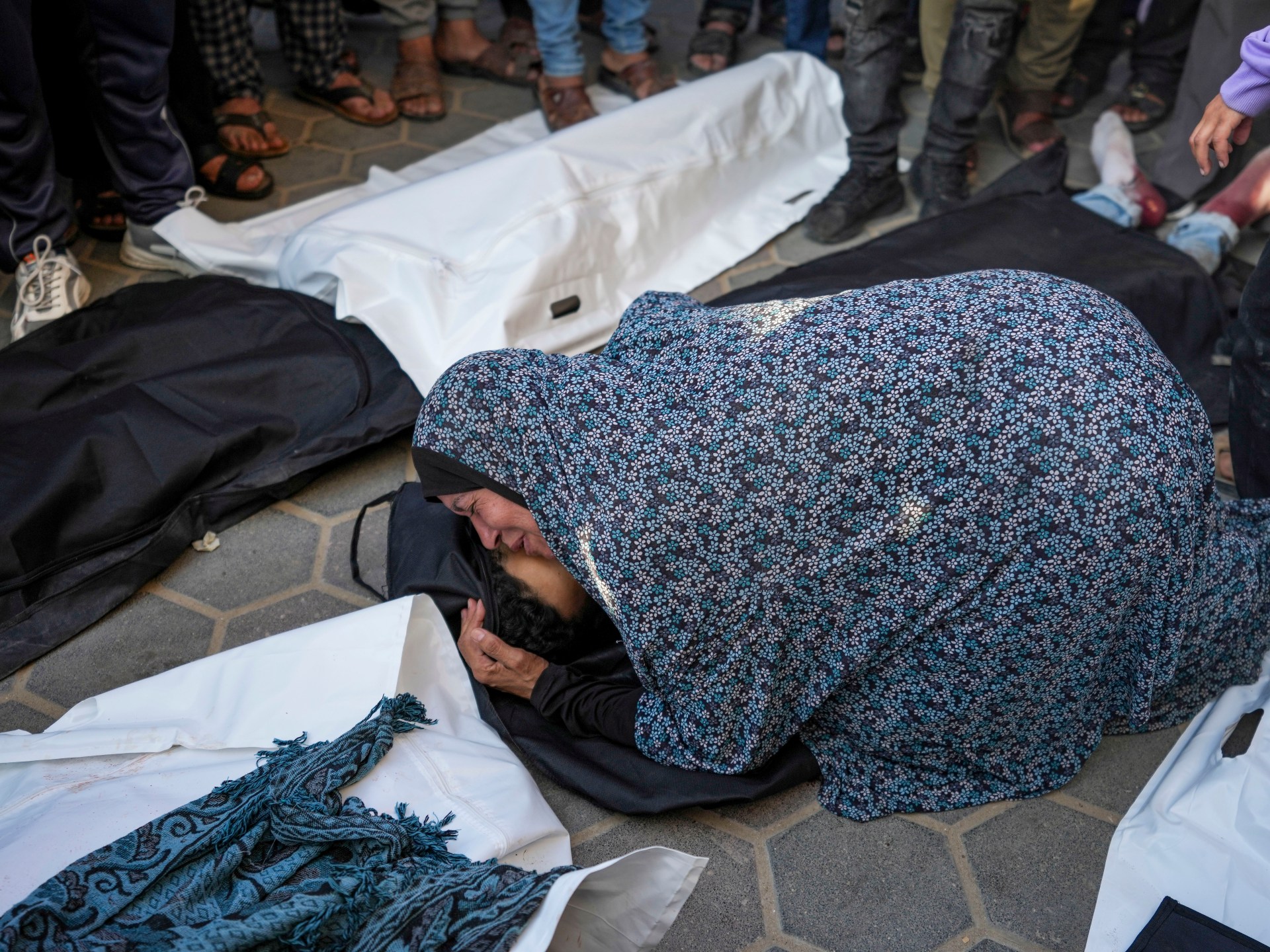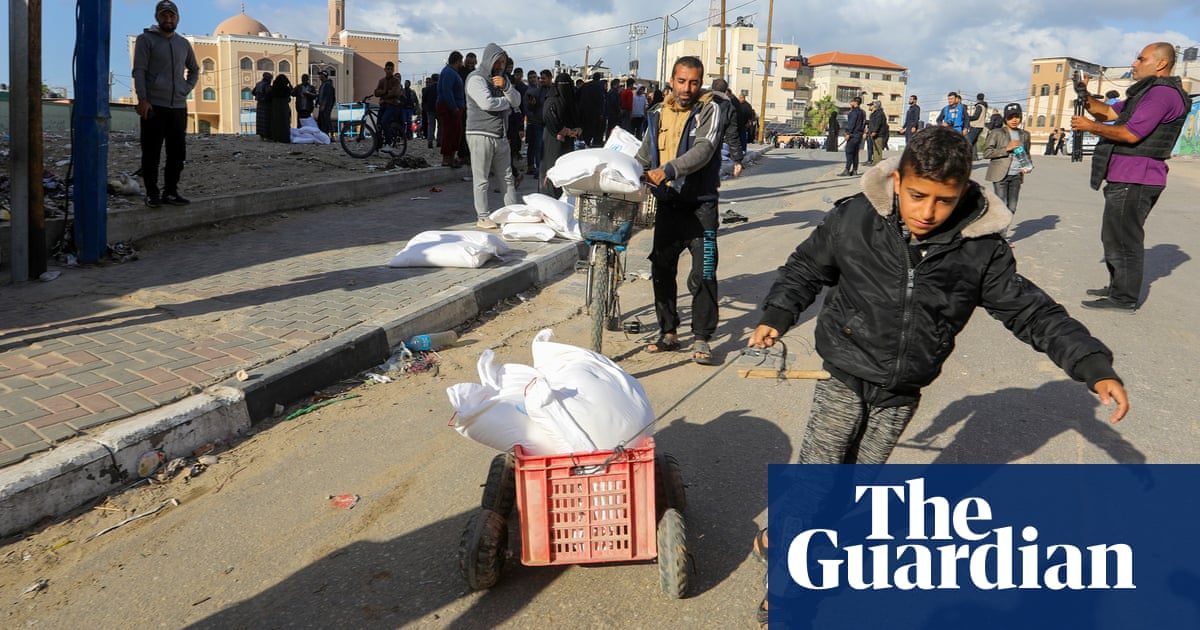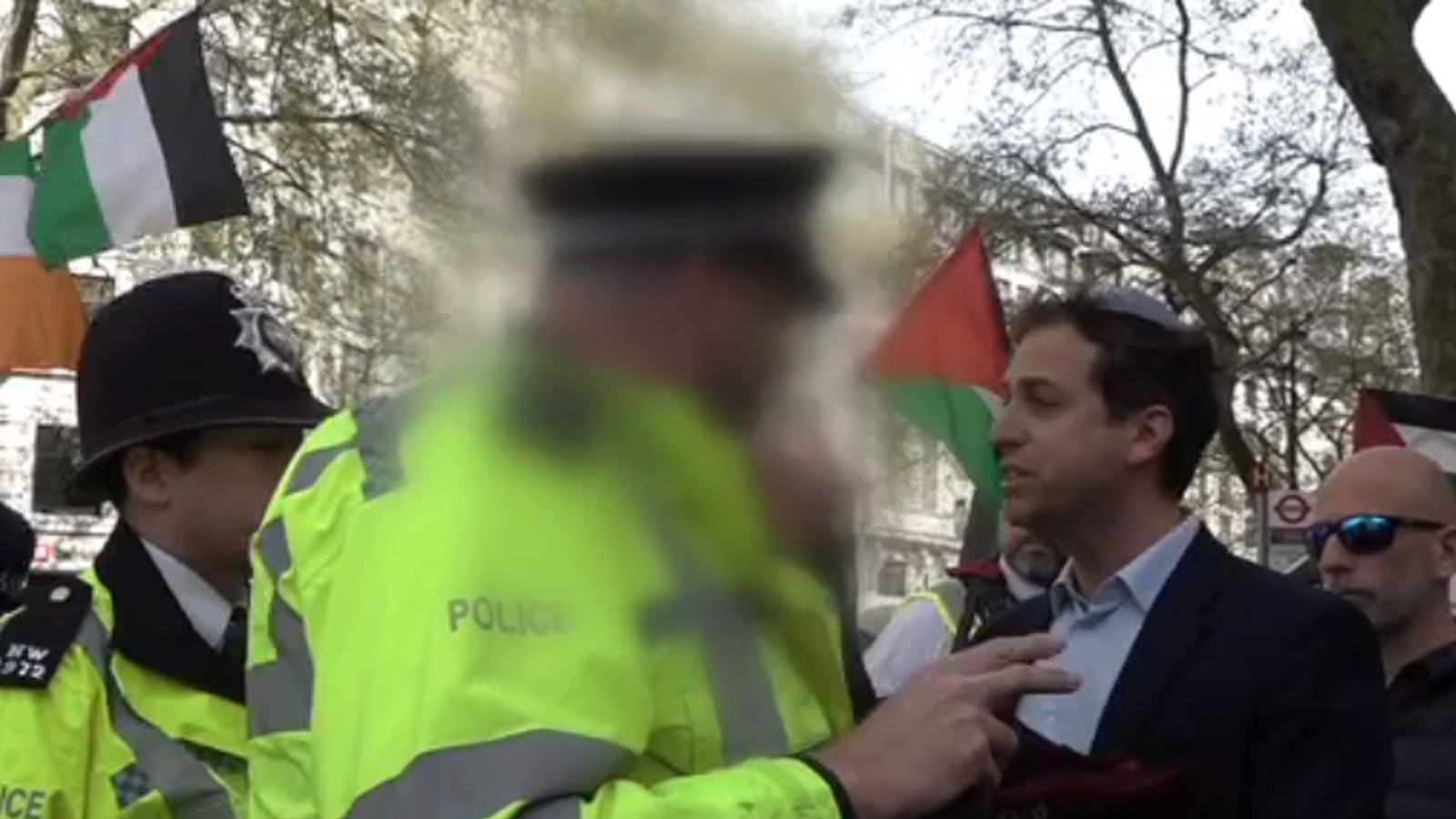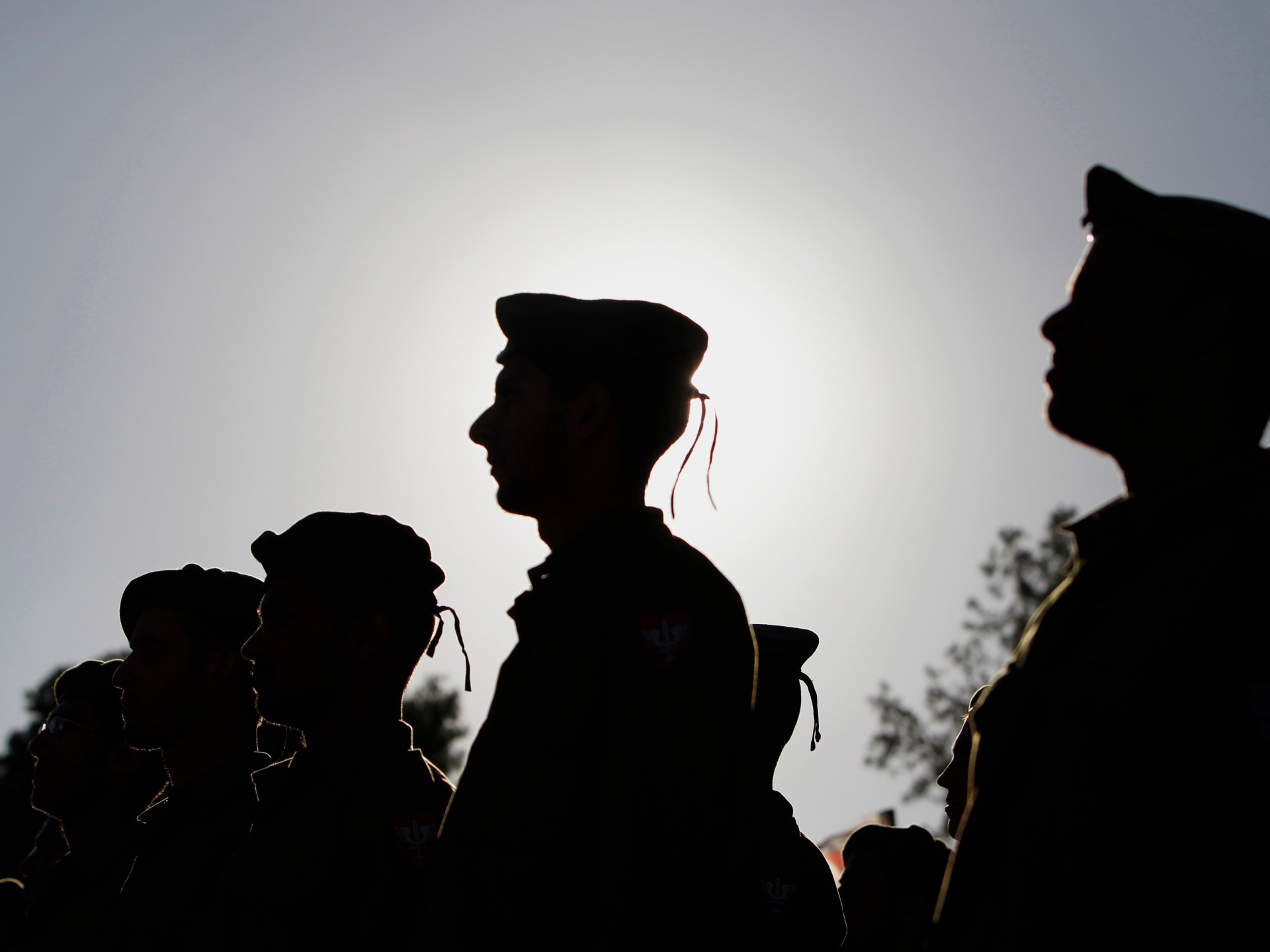I'm a bit late with this one. The Washington Post's findings on the murder of little Hind.
Palestinian paramedics said Israel gave them safe passage to save a 6-year-old girl in Gaza. They were all killed.
For 3½ long hours on Jan. 29, the cellphone in
6-year-old Hind Rajab’s hands was the closest thing she had to a lifeline. Alone in the back seat of a car outside a Gaza City gas station, she was drifting in and out of consciousness, surrounded by bodies, as she told emergency dispatchers that Israeli tanks were rumbling closer.
From the operations room of the
Palestine Red Crescent Society (PRCS), roughly 50 miles away in the city of Ramallah, the team on duty had done their best to save the child. Paramedics were on their way, the dispatchers kept telling her: Hold on.
The paramedics were driving to their deaths.
From left: Hind Rajab, 6, Bashar Hamada, 44, and his daughter Layan, 15, were killed, along with four other family members, as well as paramedics Yousef Zeino and Ahmed al-Madhoun. (Mohammed Hamada and Palestine Red Crescent Society )
Twelve days later, when a Palestinian civil defense crew finally reached the area, they found Hind’s body in a car riddled with bullets, according to her uncle, Samir Hamada, who also arrived at the scene early that morning. The ambulance lay charred roughly 50 meters (about 164 feet) away from the car, its destruction consistent with the use of a round fired by Israeli tanks, according to six munitions experts.
In a statement, the Israel Defense Forces said it had conducted a preliminary investigation and that its forces were “not present near the vehicle or within the firing range” of the Hamada family car. Nor, the IDF said, had it been required to provide the ambulance permission to enter the area. The State Department said it has raised the case repeatedly with the Israelis. “The Israelis told us there had, in fact, been IDF units in the area, but the IDF had no knowledge of or involvement in the type of strike described,” spokesman Matthew Miller said.
A Washington Post investigation found that Israeli armored vehicles were present in the area that afternoon. The Post additionally found that the gunfire audible as Hind and her cousin Layan begged for help and the extensive damage caused to the ambulance were consistent with Israeli weapons. The analysis is based on satellite imagery, contemporaneous dispatcher recordings, photos and videos of the aftermath, interviews with 13 dispatchers, family members and rescue workers, and more than a dozen military, satellite, munitions and audio experts who reviewed the evidence, as well as the IDF’s own statements.
After this story published, Miller said: “The death of Hind Rajab is an unspeakable tragedy — something that never should have occurred and never should occur. … So what we are going to do is take the information that is contained in that Washington Post story, we’re going to go back to the government of Israel and ask them for further information. We would still welcome a full investigation into this matter, and how it occurred in the first place.”
PRCS as well as representatives from Euro-Med Human Rights Monitor and the Civil Defense who visited the scene on Feb. 10 provided visuals to The Post, which it verified by independently confirming the location using satellite imagery, open-source maps and eyewitness interviews.
The Post’s review also found that the ambulance was discovered along a route provided by COGAT, an arm of the Israeli Defense Ministry that generally coordinates safe passage for medical vehicles with the IDF. COGAT initially referred specific questions about the ambulance to the IDF. In mid-March, Elad Goren, head of Coordination and Liaison Administration at COGAT, told The Post that the agency “coordinated everything … including the ambulance that wanted to go and find Hind,” but said he was “not aware” of the specifics. COGAT did not respond to repeated requests to clarify.
The IDF denied that any coordination had taken place, repeating its assertion that its forces were not in the area. It did not comment on two detailed timelines of the incident, or on the expert findings, provided by The Post.
It was not possible to reach Hamas’s military wing for comment on the incident.
Humanitarian officials have
warned that a system of coordination with Israel’s military, designed to protect their aid deliveries and lifesaving ambulance maneuvers, is broken. Israeli strikes on a
World Central Kitchen convoy that killed seven aid workers in Gaza on April 1 and stirred global outrage came after failed deconfliction efforts.
More than 33,000 Palestinians have been killed during Israeli military
operations in Gaza, according to local health authorities. Amid a war of unyielding horror, Hind’s case touched a nerve around the world, in large part because her recorded cries for help offered a glimpse into the terrors faced by civilians.
9:32 a.m.
Generations of the Hamada family had lived on al-Wahda Street in the northern part of Gaza City for decades. Everything changed on Oct. 7, 2023, when Hamas militants stormed border communities in southern Israel, killing about 1,200 people, including civilians in their homes and young people at a concert, and taking at least 240 hostages back to Gaza. The assault drew a punishing response from Israel, which insists its campaign is necessary to destroy Hamas’s military capabilities.
More than 75 percent of Gaza’s population of 2.2 million has been displaced by the fighting, many residents multiple times, according to the United Nations Office for the Coordination of Humanitarian Affairs (OCHA). The Hamada family fled their houses; some went south, while others sheltered closer to home, in the nearby Tel al-Hawa neighborhood in western Gaza City.
But late on Jan. 28, Israeli forces returned to western Gaza City in numbers. Posts
on social media show heavy gunfire and airstrikes in that part of the city just after midnight local time. At 9:32 a.m., the IDF
issued a call in Arabic on X, the social media platform formerly known as Twitter, asking residents in the west of Gaza City — including the Tel al-Hawa area — to evacuate immediately.
Hind’s uncle, Bashar, and his wife packed her into the car along with her four cousins, Bashar’s brother Samir said. They planned to drive north, out of the evacuation zone and back toward the family home in northern Gaza City.
The girl screamed, and the call dropped. “Hello,” Qam shouted. “Hello?”
While Qam spoke to Layan, 62 gunshots are audible over six seconds in two bursts of fire on a recording of the call, according to Earshot, a nonprofit that conducts investigations using audio evidence.
Steven Beck, an acoustic analyst who consulted with the FBI for more than a decade, examined the recording at the request of The Post, and found the number of rounds per minute fired was faster than an automatic AK-patterned rifle, which Hamas fighters often use. The rate, he said, was more akin to weapons commonly issued to Israeli forces. Earshot also found the rate of fire to be faster than an AK-patterned rifle.
The call, which began around 2:30 p.m., ended in less than a minute.
A satellite image captured by Planet Labs roughly an hour later, at 3:31 p.m., shows at least four Israeli armored vehicles about 300 meters (985 feet) up the road from the girls.
Will Goodhind, an imagery analyst with
Contested Ground — an open-access satellite research group focused on military, humanitarian and international affairs — who examined the satellite imagery at the request of The Post, said the armored vehicles at the intersection closest to Hind are “tactically placed” and appear to provide a “prominent, visible presence to deter (and respond to) enemy attacks,” amid ongoing ground operations.
More than a dozen other Israeli armored vehicles are visible within a quarter-mile of the Hamada family car, the image shows.
The vehicles match the approximate size and have turret-like structures similar to at least four Israeli tracked vehicles, according to Goodhind. Of those, only the Merkava tank has been seen in action in Gaza, according to Sonny Butterworth, a senior analyst with the
defense intelligence firm Janes. The similarly sized Namer armored personnel carrier and Puma combat engineering vehicle have also been seen in action in Gaza, but lack the turret-like structure.
The Merkava, the Namer and the Puma all have 7.62-caliber machine guns, Butterworth said. The guns can fire at a rate consistent with what Beck and Earshot concluded was heard in the audio of Layan’s last call.
After Qam’s call with Layan ended, the PRCS operations room called back immediately and Hind answered. Layan was dead and tanks were moving toward the car, she told another dispatcher, Rana Faqih. Hind described the presence of tanks at least five more times throughout the call.
5:40 p.m.
The Palestine Red Crescent Society routinely coordinates the passage of its ambulances with Israeli authorities, in the hope of securing safe access to areas where the situation on the ground is potentially dangerous.
Fathi Abu Warda — a liaison between the Palestinian Authority’s Health Ministry in Ramallah and COGAT, an arm of the Israeli Defense Ministry that oversees the Palestinian territories — said that permission for an ambulance to proceed to Hind arrived in the form of a route map from COGAT. Abu Warda sent the map to the PRCS dispatch team on WhatsApp at 5:40 p.m., according to messages reviewed by The Post.
The map, reviewed by The Post, appears to have been made in Google Maps and has a clear blue line, instructing the ambulance drivers to follow an indirect route that avoided much of the evacuation area.
Ismail al-Ghoul, a correspondent with the Al Jazeera news agency, said he was sitting with the paramedics, Yousef Zeino and Ahmed al-Madhoun, at al-Ahli Hospital when they received the map. The paramedics headed out quickly to the location where Hind was trapped. It was roughly two miles away — down Beirut street, then right, and onto al-Majdal Street.
“The details were completely clear,” Ghoul said.
The green laser — known as a dazzler — would normally suggest that the ambulance was identified but not necessarily targeted by a ground unit operating ahead of the armed vehicles, according to Avihai Stollar, a researcher with Breaking the Silence, an advocacy group composed of Israeli army veterans who oppose the occupation and that has compiled testimonies from former soldiers.
The IDF, in response to questions from The Post, did not clarify if the green dazzler belonged to its forces and what signal it may have been intended to send.
Social media
posts from 2018 suggest that Hamas and other Palestinian resistance groups have also used green dazzlers to obscure Israeli soldiers’ eyesight. Ashka Jhaveri, a researcher at the Institute for the Study of War, a group that closely monitors conflicts, said she had not observed the use of green dazzlers by either side in this conflict.
6 p.m.
As the call with the paramedics drops at 6 p.m., a bang is audible on the call with Hind.
But the call with the girl continued, suggesting that cellphone service was not cut.
Red Crescent dispatchers had managed to patch Hind’s mother, Wesam, into the call in the hope that it might calm the child.
When the bang echoed out through the phone line, Wesam cried out: “Hanood, are you okay?”
A moment later, Hind replied.
“Yes,” she said.
By this point, everyone on the call with Hind — her family, the dispatchers — were praying they would not lose her too. She was falling silent for long periods. The team did what they could to keep her talking, but it was clear that the child’s thoughts had begun to loop. She just kept saying, “Come get me, quickly.”
If the phone ran out of battery, Faqih told her, she was to stay in the car, where they could still find her. “If night comes and we don’t come, close your eyes so that you don’t see the tanks.”
They lost contact with her soon after 6 p.m., spokeswoman Nebal Farsakh recalled.
No one spoke much after that. The room felt muffled with shock. They tried to call Hind again and again, Farsakh said, but no one answered.
Twelve days later
The ambulance had come to a stop where a dark spot resembling a scorch mark first appeared in satellite imagery taken at 10:21 a.m. on Jan. 30 — the morning after contact with the paramedics and Hind was lost.
When the IDF withdrew from the area nearly two weeks later on Feb. 10, Palestinian residents, including Samir, Hind’s uncle, and a civil defense crew found a haunting scene.
The door and pieces of the hood of the family car had been torn off. Samir described his brother’s body as “dangling” from the driver’s seat. The stench of decomposing corpses clung to the vehicle. He struggled to look at the bodies of the five children sandwiched on the back seat. Hind sat to the right of Layan, who was behind the driver. A page from what looks like a coloring book was crumpled where their feet would have rested. The bodies were so decomposed that it was not possible to immediately see where the gunshots had hit them, Samir said. “We were only able to deduce their identities,” he recalled.
Holes in the Hamada family car were probably made by a 7.62-caliber machine gun, a weapon fixed to the Merkava, Namer and Puma, said Andrew Galer, head of the land platform and weapons team at defense intelligence firm Janes, who examined photos and video of the aftermath.
Armored vehicles, including some that roughly match the size of those seen in the Jan. 29 satellite imagery, were also present in the same location multiple times in the following 12 days.
Satellite imagery of an intersection just shy of 1,000 feet from Hind that was taken on Jan. 29, Feb. 7 and Feb. 8 shows armored vehicles.
A fragment of a U.S.-made 120mm round, which can be fired by the Merkava, was visible in video and images after rescue crews searched the scenes.
The Post was not able to determine exactly where just north of the ambulance the fragment was originally found or if it was directly connected to the ambulance strike, given the time elapsed and the ongoing fighting.
Bright yellow lot production codes on the munition identified it as a U.S.-made high-explosive antitank round produced in November of 1996. (Euro-Med Human Rights Monitor)
The ambulance was a burned-out shell, video shows, and almost nothing remained of the paramedics’ bodies. There was a hole approximately 300 millimeters (almost a foot) in diameter adjacent to where the license plate would have been.
“The damage to the rear does look like the exit of a projectile,” Chris Cobb-Smith, a security consultant and former artillery officer in the British army, wrote in a message, noting that it appeared to be “targeted with a direct fire munition” and was “approximately the size of a tank shell.”
N.R. Jenzen-Jones, the director of Armament Research Services, added that it appeared to exit “the vehicle relatively level to the ground,” which suggests it was “fired from ground level on a fairly flat trajectory, rather than an air-delivered or indirect-fire munition.”
A round fired by a tank is just one possibility, Jenzen-Jones and multiple other experts cautioned, noting that there is little data on craft-produced Hamas munitions and few tests have been done to predict what would happen if other munitions were used against a thin-skinned vehicle. Common rocket launchers used by Hamas are able to fire different antitank rounds, including the standard PG-7, which could not create the observed damage, according to munitions experts.
None of the six munitions experts interviewed by The Post could say definitively what munition caused the damage or killed the paramedics based on the ambulance alone, because of the time elapsed and the complexity of urban combat. They agreed, however, that the damage to the ambulance was consistent with the potential use of a round fired from Israeli tanks that match the vehicles captured in satellite imagery in the area that day.
The seven bodies of the Hamada family were buried at al-Shifa Hospital. There was no medical report, Samir said.
“All that mattered to us at that moment was to retrieve them and bury them in a decent way.”
source
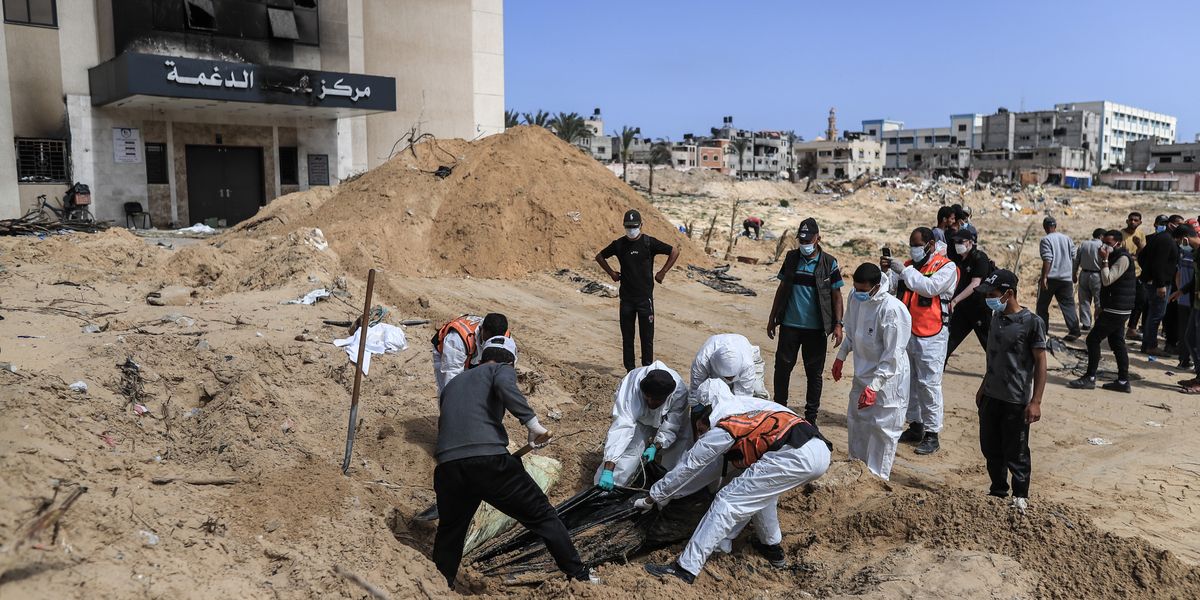
 www.commondreams.org
www.commondreams.org




